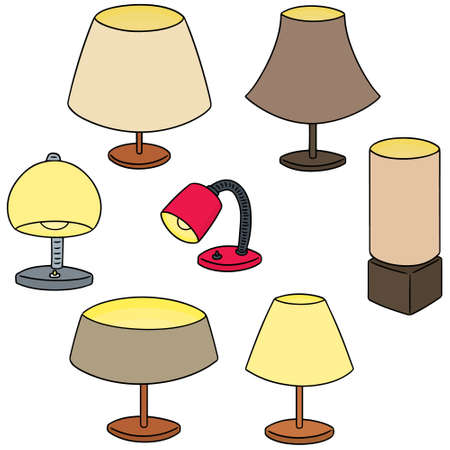Introduction to Outdoor Lighting Maintenance
When it comes to enhancing curb appeal and ensuring safety, outdoor lighting fixtures play a crucial role for American homeowners. However, simply installing these lights isn’t enough—regular maintenance is essential to keep them functioning properly and looking their best. Over time, exposure to the elements like rain, snow, dust, and pollen can cause outdoor fixtures to deteriorate or become less efficient. Without proper care, lights may become dimmer, develop electrical issues, or even stop working altogether. This guide will walk you through the importance of maintaining and cleaning your outdoor lighting fixtures, helping you protect your investment and keep your home both inviting and secure all year long.
2. Safety Precautions Before You Start
Before you grab your tools and start cleaning outdoor lighting fixtures, it’s important to prioritize safety. Dealing with electrical components outside your home comes with unique risks, especially when moisture and weather exposure are involved. Here are some key safety tips and considerations every homeowner should follow before beginning any maintenance or cleaning project on outdoor lights:
Key Safety Tips
| Safety Step | Description |
|---|---|
| Turn Off Power | Always switch off the circuit breaker or remove the fuse that controls your outdoor lighting to avoid accidental shocks. |
| Check Weather Conditions | Only work on outdoor fixtures during dry weather to prevent slips and electric hazards caused by water. |
| Use Proper Tools | Use insulated tools designed for electrical work and make sure ladders are stable if youre reaching elevated fixtures. |
| Wear Protective Gear | Gloves and safety glasses protect against sharp edges, bugs, and debris inside the fixture. |
| Inspect Fixtures First | Look for damaged wires, cracked glass, or loose screws before touching anything. If you spot major issues, consult a professional electrician. |
Additional Considerations
- If your fixtures have bulbs that run hot, let them cool down completely before handling.
- Avoid using metal ladders around electricity; fiberglass is safer.
- Keep pets and children away from the area while working.
When in Doubt, Call a Pro
If you’re ever unsure about wiring or notice extensive corrosion or water damage, don’t risk it—call a licensed electrician. Safety should always come first when working with electrical systems outdoors.

3. Essential Tools and Supplies
Before you roll up your sleeves and get started on sprucing up your outdoor lighting fixtures, it’s important to have the right tools and supplies on hand. Most homeowners already have many of these items in their garage or utility closet, making the maintenance process both convenient and cost-effective. Here’s a rundown of what you’ll need:
Basic Cleaning Tools
To safely clean your exterior lights, gather a soft microfiber cloth or sponge, a bucket, and an old toothbrush for those hard-to-reach crevices. A step ladder is crucial for reaching fixtures mounted high on walls, posts, or ceilings. If your fixtures are especially dusty or cobwebbed, a handheld duster or even a can of compressed air can help dislodge debris without scratching the surfaces.
Gentle Cleaning Solutions
A mild dish soap mixed with warm water is usually all you need for routine cleaning. Harsh chemicals can damage finishes or cloud glass, so avoid using ammonia-based products or abrasive cleaners. For stubborn mineral deposits on glass, white vinegar diluted with water is a safe and effective choice.
Protective Gear
Don’t forget to protect yourself during the process. Wear rubber gloves to keep your hands safe from grime and cleaning agents. Safety glasses are also recommended when removing bugs or using sprays overhead.
Maintenance Must-Haves
If you plan to do more than just clean—such as tightening loose screws or replacing bulbs—you’ll want a basic screwdriver set (both Phillips and flathead), replacement bulbs that match your fixture’s specifications, and some silicone sealant to reseal any exposed areas that might let in moisture. Keeping these essentials handy will make each maintenance session quick and efficient, helping your outdoor lights shine bright all year long.
4. Step-by-Step Cleaning Process
Keeping your outdoor lighting fixtures in top shape doesn’t have to be complicated. Here’s a safe and effective cleaning process for the most common types of exterior lights found around American homes, from front porch lanterns to backyard landscape spotlights.
General Safety Tips Before You Start
- Turn off all power to the fixtures at the circuit breaker to avoid electrical shock.
- Allow bulbs and fixtures to cool completely before handling.
- If using a ladder, ensure it is stable and placed on even ground.
Step-by-Step Instructions by Fixture Type
| Fixture Type | Cleaning Steps |
|---|---|
| Porch Lights & Wall Sconces |
|
| Pendant & Hanging Fixtures |
|
| Landscape Pathway Lights |
|
| Floodlights & Spotlights |
|
| Solar-Powered Lights |
|
Additional Pro Tips:
- Avoid ammonia-based cleaners on plastic lenses, as they can cloud or discolor over time.
- If you notice persistent fogging inside glass enclosures, check for worn seals or gaskets and replace as needed to prevent moisture buildup.
Remember:
A little regular maintenance goes a long way in keeping your home’s exterior welcoming and well-lit year-round. Always follow manufacturer recommendations specific to your lighting fixtures when available for best results.
5. Troubleshooting Common Issues
Even with regular maintenance, outdoor lighting fixtures can run into some common issues. Knowing how to spot and address these problems early can save you time and prevent costly repairs down the road.
Corrosion
Outdoor lights are exposed to the elements, making corrosion a frequent problem, especially in coastal areas or places with high humidity. To identify corrosion, look for greenish or whitish buildup on metal parts or visible pitting and flaking. If you notice these signs, turn off the power supply and gently clean the affected area using a mixture of baking soda and water. For severe cases, you may need to replace corroded components. To prevent future corrosion, consider applying a protective sealant designed for outdoor use.
Moisture Intrusion
Moisture inside light fixtures can cause flickering, short circuits, or even complete failure. Signs of moisture intrusion include condensation on the inside of glass covers or rust on internal parts. To fix this issue, first ensure the fixture is properly sealed by checking gaskets and seals for damage or wear. Replace any faulty seals and make sure all screws and covers are tightened securely. For persistent moisture issues, installing a silica gel pack inside the fixture can help absorb excess humidity.
Burnt-Out Bulbs
One of the most straightforward issues is a burnt-out bulb. If your outdoor light isn’t turning on, first check if the bulb has reached the end of its lifespan by replacing it with a new one rated for outdoor use. Always handle bulbs with clean gloves or a cloth to avoid transferring oils from your skin, which can shorten bulb life. If new bulbs continue to burn out quickly, there might be an issue with the fixture’s wiring or voltage; in this case, consulting a licensed electrician is recommended.
Other Frequent Problems
Other common issues include loose connections, faulty timers, or malfunctioning motion sensors. Check wiring connections periodically to ensure they’re secure, reset timers according to seasonal daylight changes, and clean sensor lenses regularly to maintain optimal performance.
When to Call a Professional
If you encounter persistent electrical problems or notice damage that you’re not comfortable handling yourself, don’t hesitate to contact a qualified electrician. Safety should always come first when working with outdoor electrical fixtures.
6. Tips for Prolonging the Life of Your Fixtures
Keeping your outdoor lighting fixtures in top condition doesn’t just enhance your home’s curb appeal—it also saves you money and hassle over time. Start by choosing fixtures designed specifically for outdoor use, as these are built to handle the elements better than indoor alternatives. To keep your lights shining bright year-round, make weatherproofing a priority. Apply a protective sealant to metal components, check rubber gaskets or seals for cracks, and replace them as needed to prevent moisture from getting inside.
Stick to a maintenance schedule: inspect your fixtures at least twice a year, ideally during the spring and fall. Clean off dirt, debris, and bugs that can block light or trap moisture. Tighten any loose screws or hardware to ensure fixtures stay secure during storms and high winds. If you live in an area with harsh winters, consider removing or covering more delicate fixtures before snow and ice hit.
Regularly check for signs of rust or corrosion, especially after heavy rain or humidity spikes. Promptly address any issues you find—a little touch-up paint or rust remover can go a long way. For solar-powered lights, wipe down panels so they absorb sunlight efficiently, and replace batteries when performance drops.
Finally, swap out bulbs with energy-efficient LEDs—they last longer, generate less heat, and attract fewer insects compared to traditional bulbs. By following these simple tips and keeping up with scheduled upkeep, you’ll keep your outdoor lighting looking great while protecting your investment for years to come.
7. When to Call a Professional
While regular maintenance and cleaning of outdoor lighting fixtures are well within the abilities of most homeowners, there are certain situations where it’s safer and smarter to reach out to a licensed electrician or lighting specialist. If you notice persistent electrical issues—like flickering lights, frequent blown fuses, or circuits that trip repeatedly—it’s time to call in an expert. Likewise, if you encounter exposed wiring, corroded connections, or fixtures that seem unstable or damaged beyond basic repair, don’t attempt a DIY fix. Professional electricians have the knowledge and equipment to safely address complex problems and ensure your outdoor lighting is up to code.
Another sign you should contact a pro is if you’re planning any major upgrades, such as adding new fixtures, rewiring existing lights, or integrating smart home technology into your exterior lighting system. Local building codes and safety regulations can be complicated, and mistakes can be both costly and dangerous. A qualified specialist will make sure your installation meets all requirements and functions safely for years to come.
Finally, if you’re ever unsure about what you’re seeing—strange noises from the fixture, unexplained outages, or signs of water damage inside electrical components—err on the side of caution. Your safety and the integrity of your home’s electrical system should always come first. Don’t hesitate to bring in a professional when the job calls for it; their expertise can save you time, money, and peace of mind in the long run.


